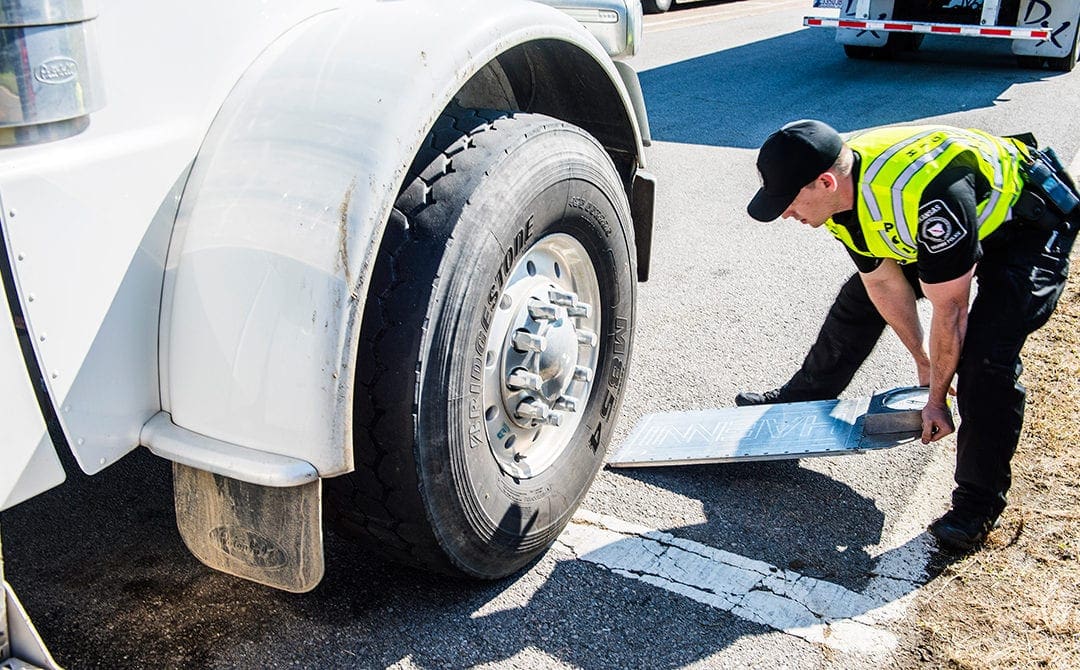Roadside inspections are a way of life for commercial motor vehicle (CMV) drivers. They take on special emphasis during the annual Commercial Vehicle Safety Administration (CVSA) International Roadcheck, set for June 4-6 this year in North America.
This year’s emphasis is on steering and suspensions, and you and your drivers can prepare now to ensure inspections go smoothly.
But as motor carriers know, inspections occur well beyond a 72-hour span every year in June. Here are five common inspections that every carrier and driver should understand.
1. Comprehensive Driver and Vehicle
This is the most common type of inspection and the most thorough. The investigation covers both the driver and vehicle and takes about 45-60 minutes to complete. A driver will be asked to produce documents such as his or her commercial driver’s license (CDL), medical card, and record of duty status. The vehicle portion will check the components — brakes, frame, fuel system, lights, cargo securement, hazardous materials, tires, etc.
2. Walk-Around
The walk-around inspection is similar to the comprehensive inspection but does not include looking at components requiring the inspector to physically get under the vehicle. The walk-around takes about 30 minutes to complete.
3. Driver-Only
This type of inspection involves an inspection of documents pertaining to the driver and any hazardous materials. This includes the driver’s CDL, medical card, log, and documentation of the annual inspection.
4. Vehicle-Only
A driver need not be present for these inspections. They typically take place at a motor carrier’s place of business during an on-site visit. The process is very similar to a comprehensive vehicle inspection and serves as a valid annual inspection. If the vehicle passes, it is issued a CVSA decal indicating a certified inspector conducted the inspection.
5. Radioactive Materials
These inspections are conducted only on select shipments of radioactive material and follow a higher standard than the comprehensive inspection. Any brakes found out of adjustment in this inspection can result in an OOS violation.
6. Preparation is Key
Knowing what’s expected when inspection time arrives — and having your drivers prepared to deal with inspections in a professional and efficient manner — can only help your company going forward. Safe operations lead to fewer inspections, a good safety record, and a better reputation within the industry and with law enforcement officials. Regularly passing inspections keeps you off the Federal Motor Carrier Safety Administration’s (FMCSA) radar for its “Compliance, Safety, Accountability” (CSA) program and, out of the FMCSA’s crosshairs for more inspections.

